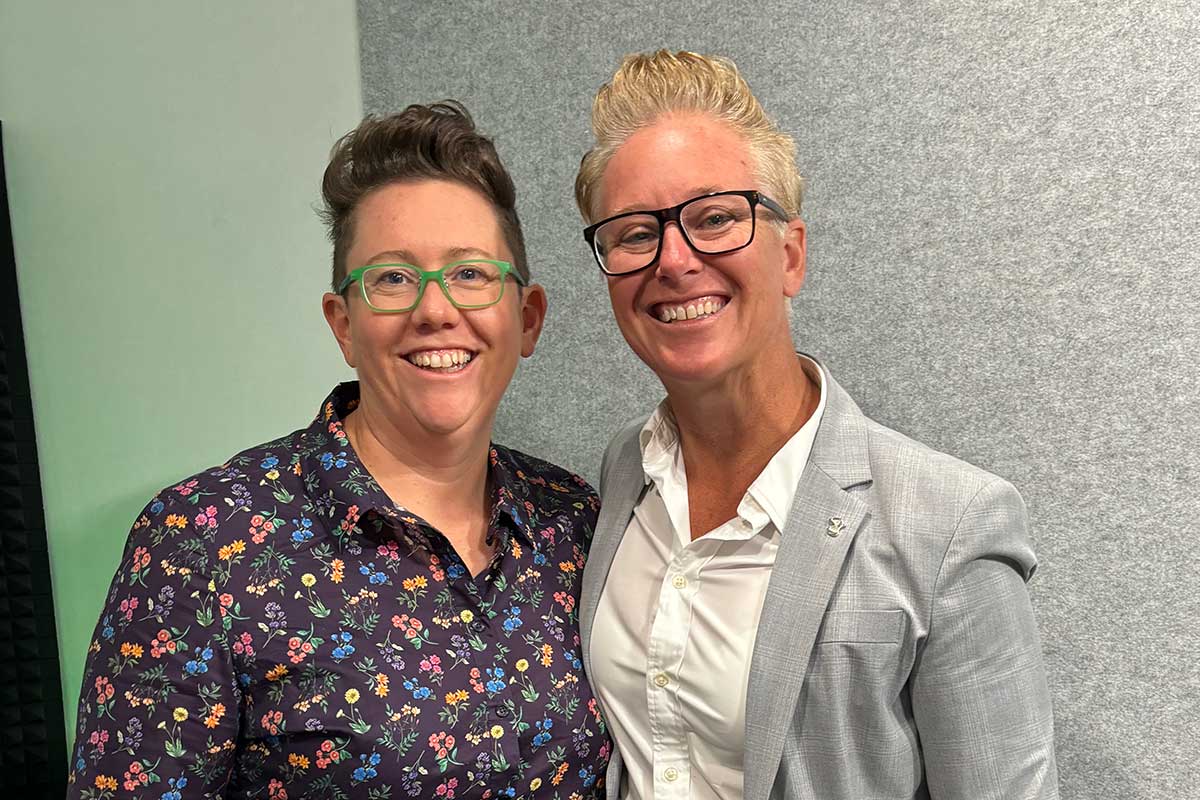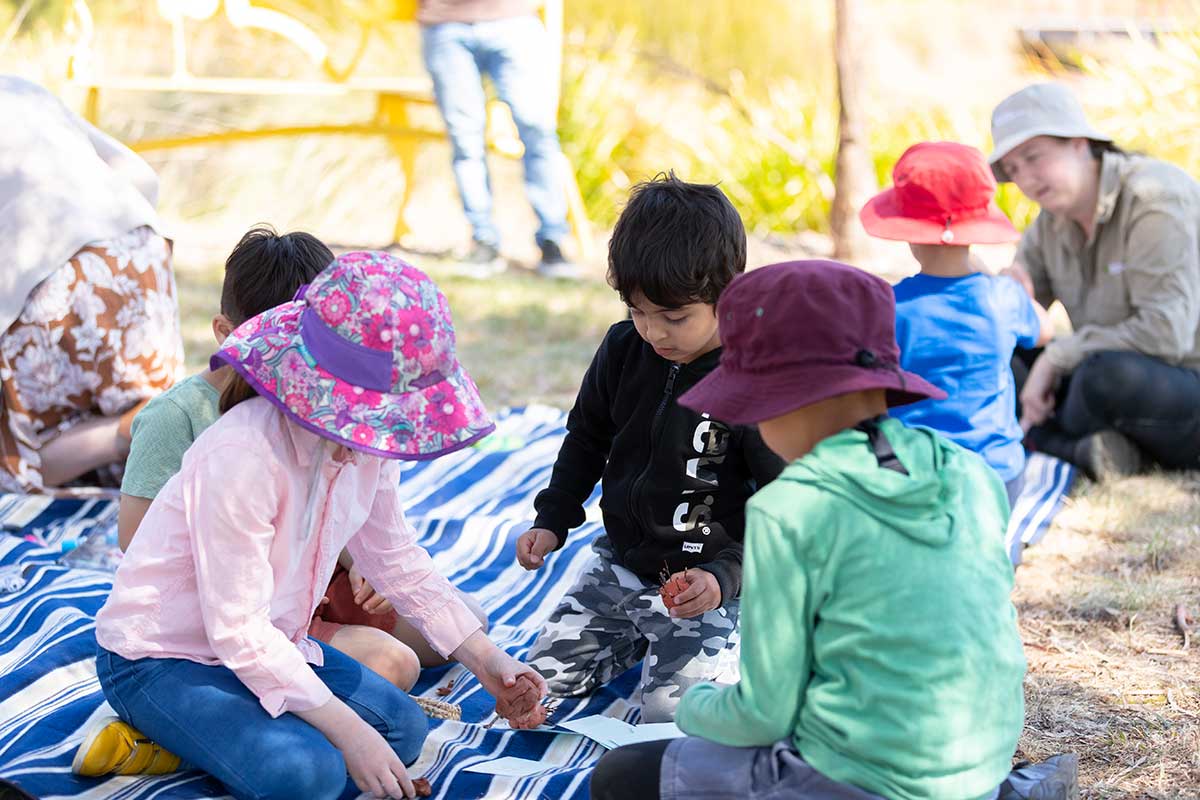How to smash the take-use-toss-repeat cycle
Founder and Managing Director of Salon Canberra, Catherine Carter, explores Canberra’s circular economy.
An artist transforms a broken TV screen into palm-sized sculpture of green-grey glass. A fashion designer creates a dress from the scraps of fabric close to hand. A cabinetmaker crafts a chair from timber destined for the tip. These are just three examples of what Canberra’s circular economy looks like.
A growing stable of designers and artists are showing how Canberra can compose a circular symphony of sorts. Glass artist Luna Ryan melts down the screens of old television sets to create whimsical dioramas while Alice Sutton, through her sustainable fashion label EDITION, explores zero waste pattern making techniques with salvaged materials influencing the shape and aesthetics of each garment.
Thor’s Hammer, meanwhile, has been sourcing timber from local demolition sites in 1994, crafting custom furniture and architectural products like floorboards and decking. Seen through the eyes of a creative, a set of old benchtops from CSIRO becomes a beautiful new bookcase; old Oregon wharf beams take on a new life as seats around Capital Brewing’s fire.
These are all great examples of how we can smash our ‘take-use-toss-repeat’ cycle – the topic of The Salon Canberra X Ginninderry Inspire Ideas event last month. Held at the Strathnairn Arts Woolshed – itself a spirit-soaring example of reuse – it brought together an unlikely cohort of artists and artisans, planners and property developers, waste contractors and circular economy specialists.
Guest speaker Dr Kate Ringvall, GHD’s Technical Director, offered a clear call to arms. “We must start by rethinking the end point – which isn’t to consume that product or service – but to ask: What happens to these materials when I’m done with them?”
From vicious to virtuous circle
We all know the answer to Dr Ringvall’s question. The materials are sent to landfill. Australia accumulates 76 million tonnes of waste a year – or 2.95 tonnes per person.
Material is not waste until it’s wasted. The Circularity Gap report, however, shows that just 7.2% of our materials, globally, are cycled back into the economy after the end of their first useful life.
Our National Waste Policy has set an 80% recycling target by 2030. But the first principle of circular economy thinking is not recycling. In fact, Inger Andersen, Chief of the United Nations Environment Program, put it bluntly earlier this month: “We cannot recycle our way out of this mess”.
Few people would deny that we find ourselves in a monumental mess. Just look at the amount of plastic that has been dumped in our environment – 7 billion of the 9.2 billion tonnes manufactured since 1950 has ended up in our oceans, waterways or piled up in landfill.
As Dr Ringvall noted during the forum: “The transition to a circular economy requires a complete paradigm shift from the linear economy model, not just a band aid. Everything needs to change.”
Changing everything starts with an acknowledgement that we need to consume less. But this event was not about pointing the finger. Far from it. Instead, it was an opportunity to share solutions and chart a new course together.
Innovators and agitators step up
There are certainly signs of global systemic change ahead. The United Nations Environmental Programme has made solid progress towards a legally binding plastics ‘treaty’ and 130 nations have agreed, at least in principle, to take action to curb the 400 million tonnes of plastic pollution piling up annually.
Last month, the European Union passed “right to repair” regulation. Similar laws have been introduced in some parts of the United States (although an investigation by Australia’s Productivity Commission in 2021 is yet to bear fruit). These could spell the end to the business model that has worked brilliantly for companies selling consumer goods, but not so well for the planet.
At the local level, innovators and agitators are shaking up the status quo. Take Canberra-based enviro-tech startup Samsara Eco, which is working with activewear brand Lululemon on what may be the world’s first infinitely recyclable nylon and polyester. Samsara Eco uses enzymes to attack complex plastics, reverting them back to their original chemical building blocks so they can be created into new products.
Or consider the innovative recycled asphalt solution being used to build roads at the new stages of Strathnairn at Ginninderry. The roads paved in stage two will divert soft plastics from 3,094,700 plastic bag and packaging equivalents, glass from 617,640 glass bottle equivalents, toner from 75,600 used printer cartridges and 1,050 tonnes of reclaimed road from landfill.
These are just a few examples of the circular economy in action, and there are plenty more in the ACT Government’s draft circular economy strategy. While we wait for the final strategy, The Circularity Gap says four simple steps can help us cut material extraction and consumption by a third: use less, use longer, use again and make clean.
As much of 80% of a product’s environmental impact is influenced by decisions made during design. The size and shape of a product, the materials it is made from and where they are sourced, and how it is wrapped, bagged, boxed and shipped… all these things are determined by designers. So, let’s elevate and celebrate the many talented people who, in rethinking the way they design, are helping set Canberra into an infinite spin.



